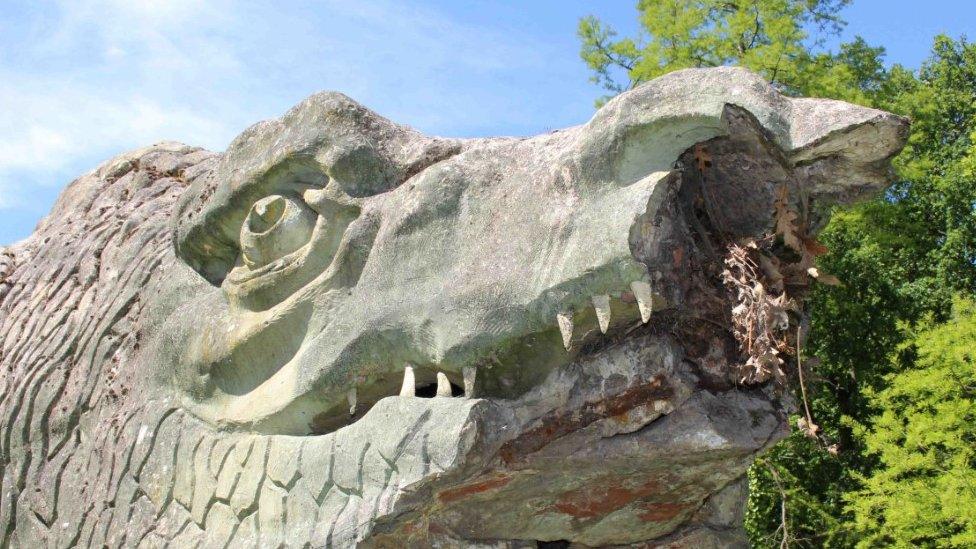Missing Crystal Palace 'dinosaur' replaced in park
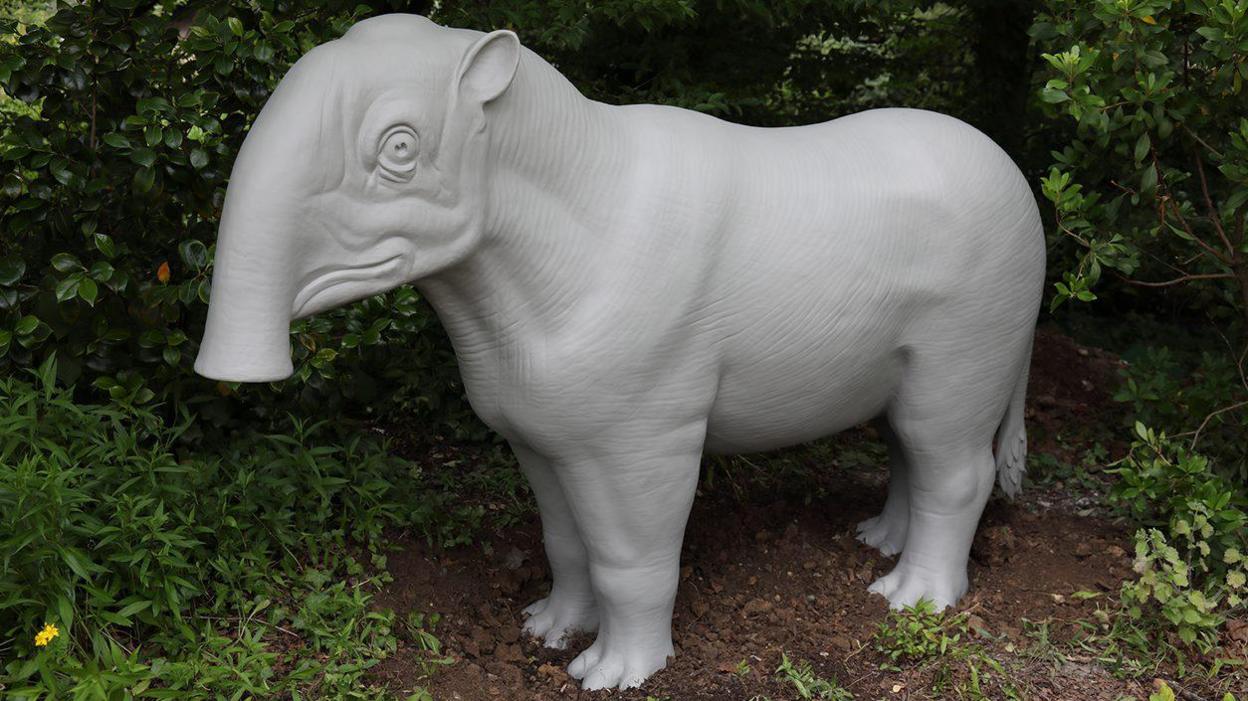
The re-creation is the first attempt to replace a lost sculpture in the park
At a glance
One of the missing Crystal Palace Park Dinosaurs has been recreated and installed
The artist worked with the Natural History Museum and University of Portsmouth to research and design the sculpture
The museum says it's the first time in decades one of the sculptures has been replaced
Bromley Council has appointed a firm to oversee a £17.5m regeneration project for the park
- Published
A life-size re-creation of one of the missing Crystal Palace Dinosaurs has been unveiled in Crystal Palace Park in south-east London.
The sculpture replicates the original version of a Palaeotherium magnum - an extinct mammal distantly related to horses - which disappeared from the park in the 1960s.
The Natural History Museum said it was the first time in 20 years that anyone had attempted to replace a lost sculpture at the site.
It comes as an architectural firm has been appointed to oversee a project as part of Bromley Council's 'regeneration plan', external for the park.
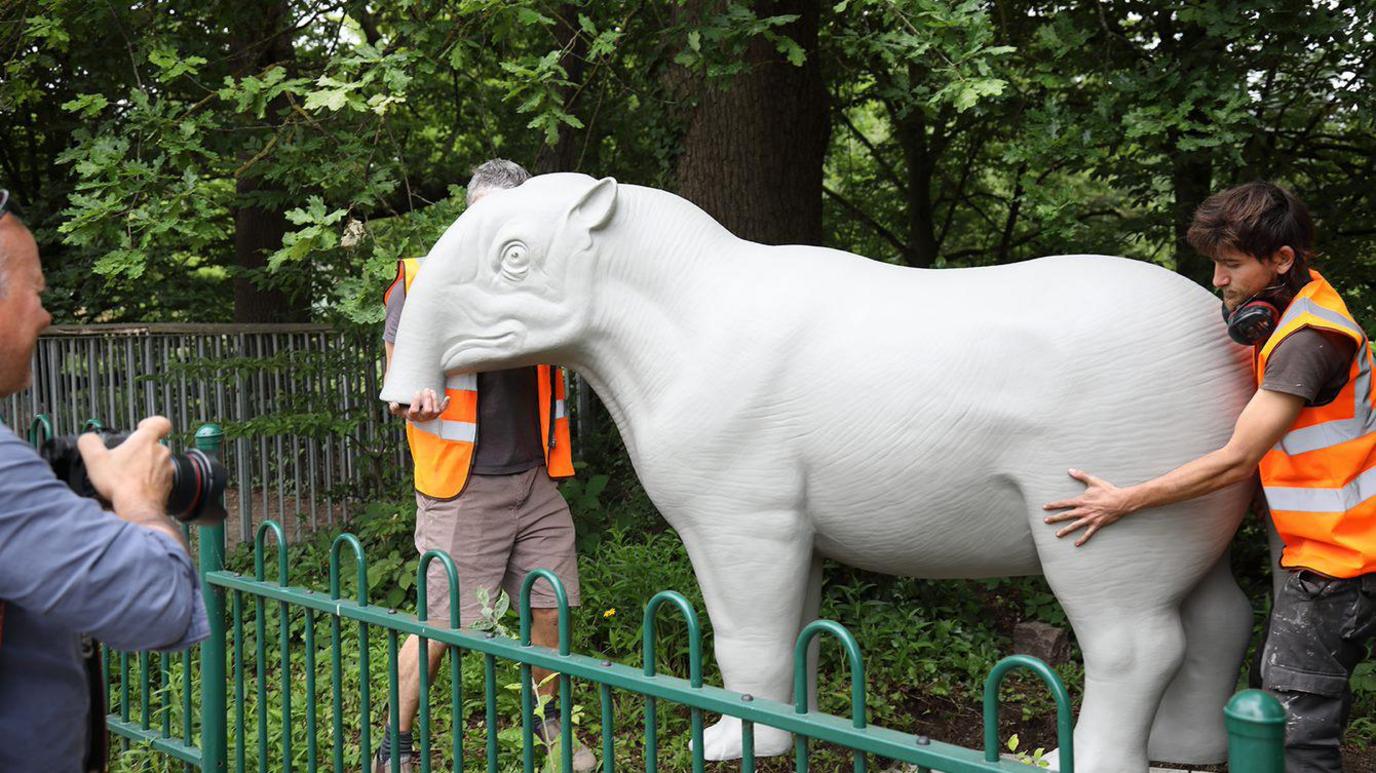
The sculpture replicates a Palaeotherium magnum, an extinct mammal distantly related to horses
Palaeoartist Bob Nicholls collaborated with scientists and historians at the Natural History Museum and University of Portsmouth to create the new piece.
Part of the complex work involved making a wooden, polystyrene and chicken wire model of the mammal before it was covered in clay and moulded in fibreglass.
The project was funded by the new Crystal Palace Park Trust and the Friends of Crystal Palace Dinosaurs.
Professor Adrian Lister, expert in palaeo mammals at the Natural History Museum said the Palaeotherium magnum lived on earth some 44.5 - 33.5 million years ago and was roughly 6ft 6in (2m) long and 3ft 3in (1m) high - the size of a "small, chunky pony".
Ellinor Michel, evolutionary biologist at the museum and chair of the Friends of Crystal Palace Dinosaurs said the sculptures are "of huge historic and scientific importance".
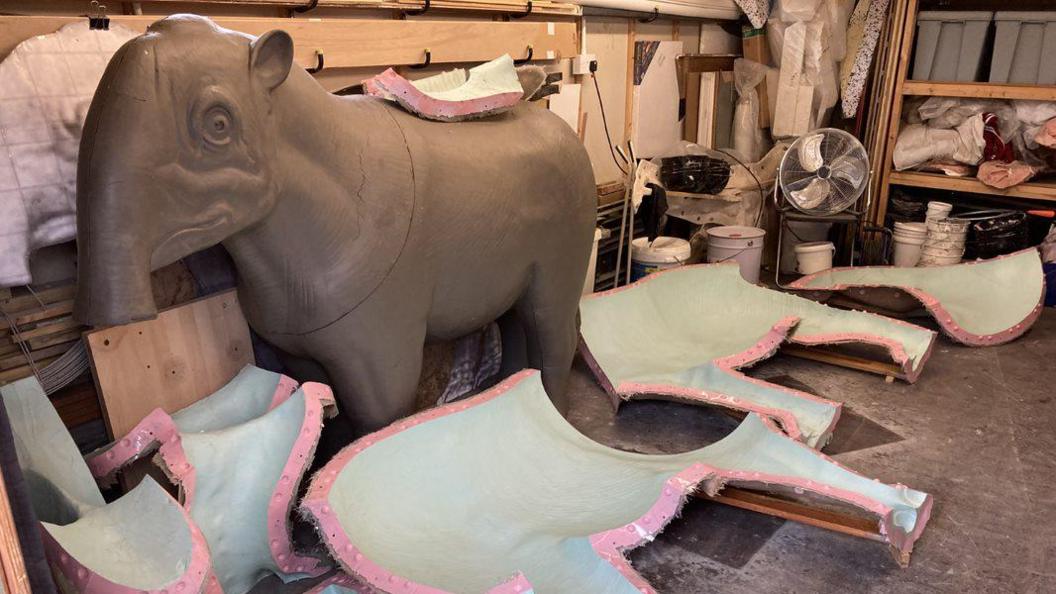
A clay model of the mammal was sculpted before a fibreglass mould was created
The Crystal Palace Dinosaurs are made up of more than 30 sculptures of extinct animals and almost 40 geological displays.
They were created between 1852 and 1855 by Benjamin Waterhouse Hawkins, a natural history artist, and represent the first major worldwide outreach project of science.
According to the Natural History Museum only four of the statues are strictly dinosaurs, with others representing marine and flying reptiles as well as crocodilians, amphibians, and mammals like palaeotherium magnum.
The original Grade I-listed dinosaur sculptures and surrounding land are now classed as the highest priority on Historic England's heritage at-risk register due to their poor condition and "immediate risk of further rapid deterioration".
The unveiling follows a National Lottery Heritage Fund award of £304,000 in development funding for Crystal Palace Park in March, ahead of a wider £5m regeneration project award.
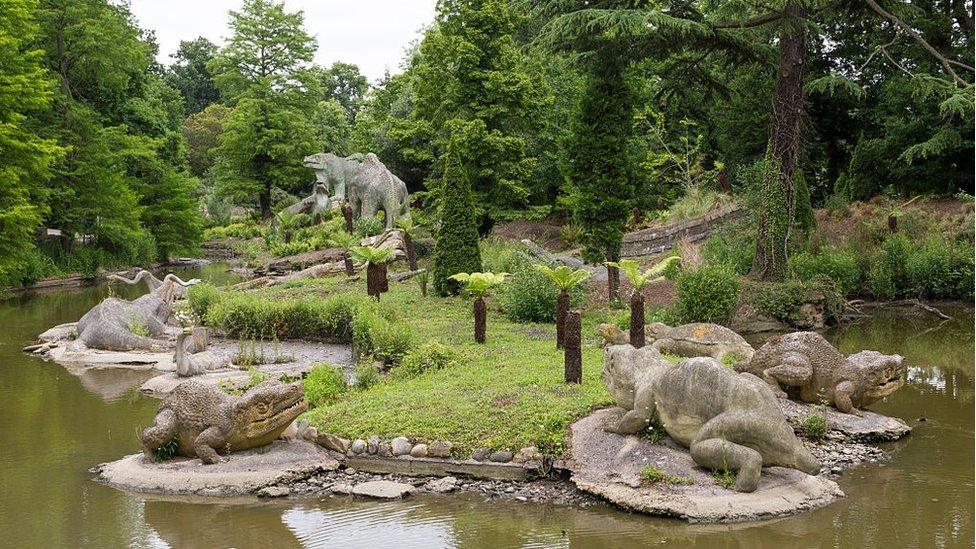
The National Lottery awarded funding towards a regeneration project in Crystal Palace Park in March
It also comes amid Bromley Council's regeneration plan for the park - including a £17.5m project to restore the park’s original features such as the remaining Crystal Palace Dinosaurs, the Italian Terraces and the site of the former palace itself.
Following a competition held by Bromley Council, architects HTA Design have been announced as the lead consultants for the current stage of the project.
Councillor Yvonne Bear from Bromley Council said: “I know local residents and visitors will be eager to see progress being made on the headline restoration works including in this next stage, but there is also much more work going on around this to ensure that a long-term model is created for the park, that firmly connects its heritage to the local community and economy.”
Follow BBC London on Facebook, external, Twitter, external and Instagram, external. Send your story ideas to hellobbclondon@bbc.co.uk, external
- Published28 March 2023

- Published18 May 2021
